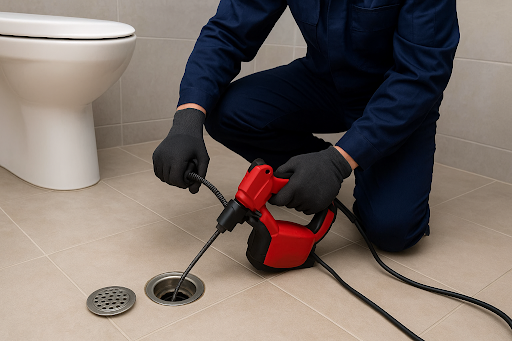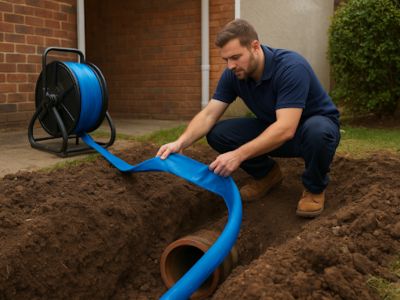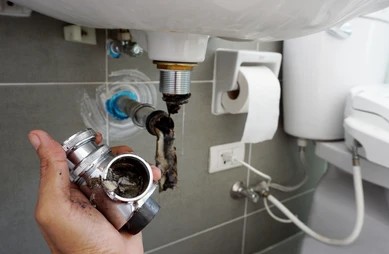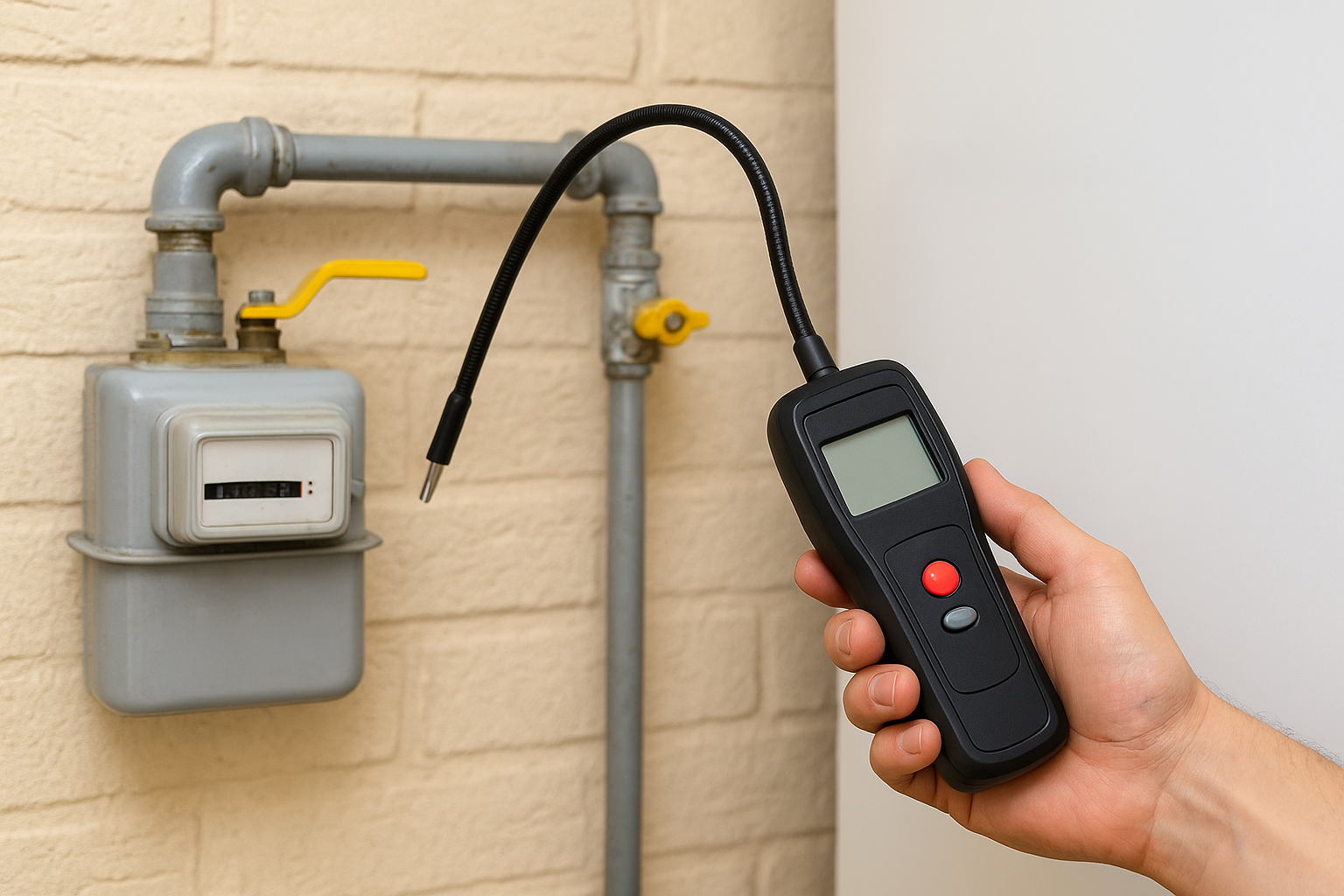A dripping tap is one of the most common household plumbing problems, and while it may seem like a minor issue, it can quickly become frustrating. Many homeowners wonder, “Why is my tap dripping?” or search for the causes of tap dripping constantly. The truth is, even a small leak can waste litres of water every day, leading to higher water bills and unnecessary strain on the environment.
Beyond water wastage, a constantly dripping tap can cause plumbing wear and tear over time, leading to bigger and more expensive problems. Ignoring it not only increases costs but may also damage fixtures and pipes.
The purpose of this article is to explain the tap dripping continuously causes, outline what causes a faucet drip, and share practical solutions. By understanding these issues, you’ll know when a simple fix is possible and when professional help is needed.
Why Taps Drip
A dripping tap is more than just an annoyance—it often points to underlying issues in your plumbing. The most common causes of tap dripping constantly include worn-out or damaged components, water pressure problems, or even improper installation. For example, a worn out washer dripping tap is a frequent issue in older fixtures, while a faulty O-ring or cartridge damage in taps can lead to leaks in modern designs.
Different types of taps can drip for different reasons. Compression taps usually leak when washers wear out, while ceramic disc taps, ball taps, and cartridge taps may drip due to seals, discs, or cartridges being damaged. Sometimes, even high water pressure tap drips can cause continuous leaking.
Understanding what causes a faucet drip is the first step to fixing it. By identifying the problem, you can apply the right solution and prevent further water waste.
Common Causes of Tap Dripping Constantly
A constantly dripping tap is not only annoying but also wastes water and increases bills. Understanding the main causes of tap dripping constantly can help you fix the issue faster and prevent bigger plumbing problems.
a. Worn-Out Washers
One of the most common tap dripping continuously causes is a worn out washer dripping tap. Washers in compression taps wear down over time, allowing water to leak even when the tap is tightly closed.
b. Damaged O-Rings
A faulty O-ring dripping tap is another frequent reason. O-rings are small rubber rings that seal the tap, and when they wear out or get damaged, you may notice dripping around the handle area.
c. Corroded Valve Seat
The valve seat connects the tap to the spout. With time, corrosion or mineral deposits can build up, leading to a damaged valve seat tap leak. This prevents a tight seal, causing water to drip.
d. Loose or Worn Parts
Internal components like screws and nuts can loosen with daily use. When this happens, it leads to uneven water flow or constant dripping, which may leave you asking, “Why is my tap dripping?”
e. High Water Pressure
Sometimes the problem isn’t inside the tap itself. High water pressure tap drip occurs when excessive pressure forces water through the tap, even when it’s off. A pressure regulator can help fix this issue.
f. Faulty Tap Installation
Improper installation or poor-quality fittings are overlooked constantly dripping tap reasons. Always check that your tap is installed correctly, as a faulty setup can cause long-term leaks.
How to Identify the Source of a Drip
When you notice a leak, the first step is figuring out what causes a faucet drip. Here are a few simple checks:
- Washer: A worn out washer dripping tap is one of the most common problems. If the drip happens when the tap is fully turned off, the washer may need replacing.
- O-ring: A faulty O-ring dripping tap usually causes leaks around the base or handle.
- Valve seat: A damaged valve seat tap leak often shows up as drips near the spout.
- Water pressure: Sometimes, high water pressure tap drip can cause a constant leak, even when all parts are fine.
Before inspecting, always turn off the water supply to avoid flooding.
If you can’t identify the exact issue, or if problems like cartridge damage in tap are involved, it’s best to call a professional plumber. They can quickly fix the problem and prevent further water waste.
Preventive Measures for Tap Dripping
Taking a few simple steps can help stop leaks before they start and reduce the causes of tap dripping constantly. Regular maintenance is key—clean aerators, check washers, and inspect O-rings to catch wear and tear early. Using high-quality taps and replacement parts also prevents common issues like a worn out washer dripping tap or a faulty O-ring dripping tap.
It’s also important to monitor water pressure. Excessive pressure can lead to a high water pressure tap drip, which puts stress on your plumbing system. Finally, don’t ignore small drips—timely repairs save water, lower bills, and protect your home from further plumbing damage.
Conclusion
A constantly dripping tap is more than just an annoyance—it often points to issues like a worn out washer dripping tap, a faulty O-ring, cartridge damage, or even high water pressure tap drips. Understanding the causes of tap dripping constantly is the first step to fixing the problem.
Early repairs are important because they help prevent water wastage, avoid bigger plumbing issues, and keep your utility bills under control.
Don’t wait until a small drip becomes a costly problem. Contact a licensed plumber today or book a professional tap repair service to get your taps fixed quickly and efficiently.
Frequently Asked Questions (FAQs)
1. Why is my tap dripping even when turned off?
A dripping tap even when off is often caused by a worn out washer, faulty O-ring, or cartridge damage in tap. Sometimes, high water pressure can also force water through, leading to constant drips.
2. What causes a faucet drip most commonly?
The most common causes of tap dripping constantly include a damaged valve seat, loose or faulty parts, and mineral buildup. These small issues can quickly lead to continuous leaks if left unfixed.
3. What causes a bathroom tap to drip constantly?
Bathroom tap drips are usually linked to a damaged valve seat tap leak or O-ring wear and tear. Since bathroom taps are used frequently, their internal parts wear out faster, causing leaks.
4. Why does my kitchen tap keep dripping even when off?
A kitchen tap drip can be due to cartridge damage, food particle buildup, or a worn out washer. Kitchens also face more grease and residue, which can worsen the problem over time.
5. How to fix a dripping tap from valve seat damage?
To fix a dripping tap caused by valve seat damage, the valve seat may need to be re-ground or replaced. This is a job best handled by a plumber to ensure a proper, lasting repair.
6. When should I call a plumber for a dripping tap?
If DIY fixes don’t work or you’re unsure of the exact cause, it’s best to call a licensed plumber. Quick professional repairs not only save water but also reduce the risk of higher water bills and long-term pipe damage.
.jpg)



